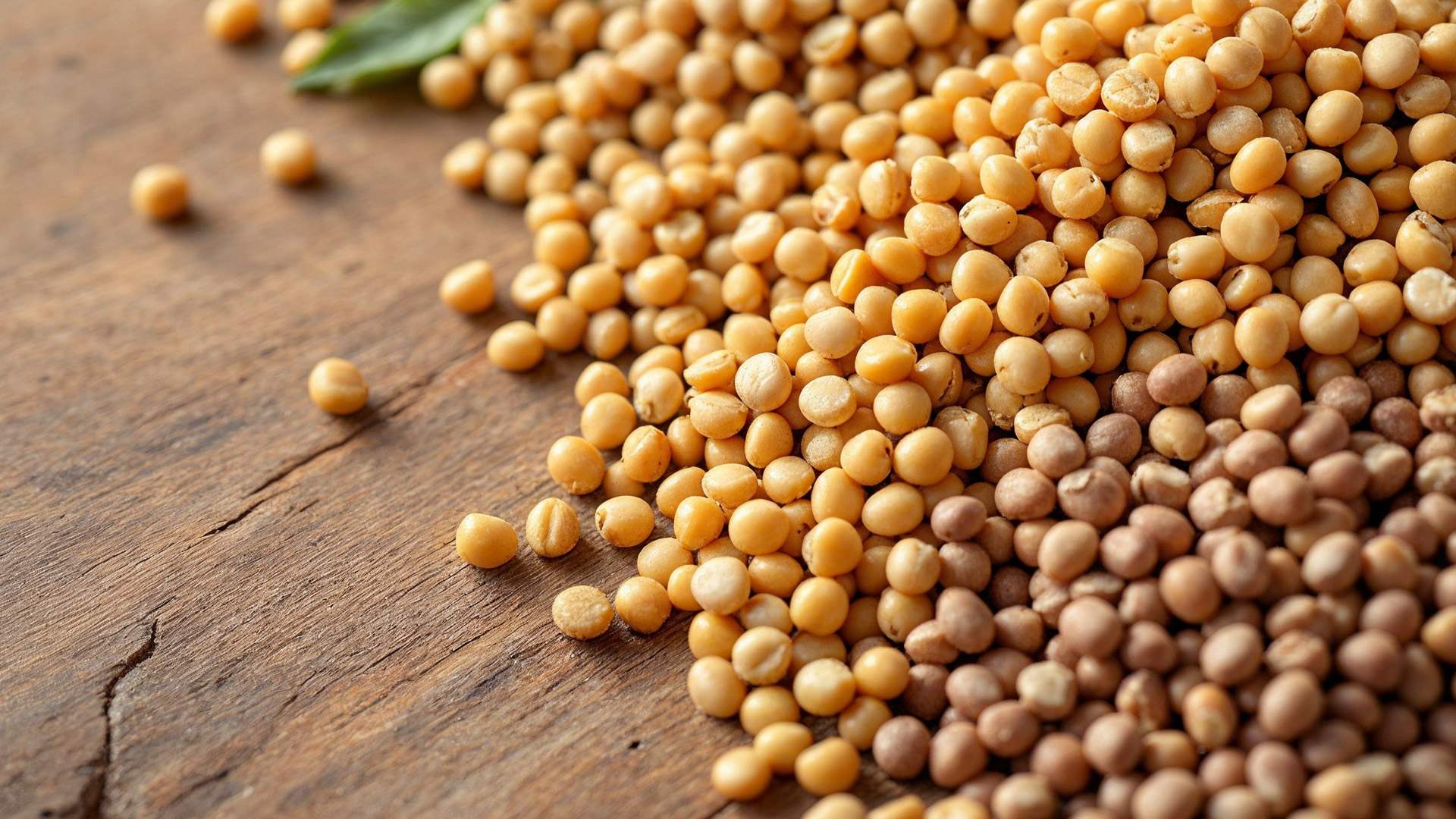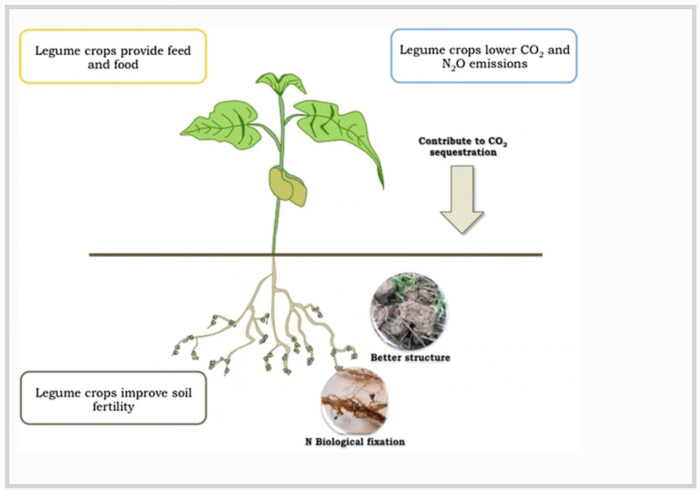
As food demand grows, progress in nitrogen-fixation could not only lead us to more productive plants with higher yields, they can also eventually eliminate chemical fertilizers.
This is good news for an already-strained ecosystem that is seeing the effects of the overuse of chemical fertilizers. This includes fertilizer runoff pollution, algal blooms, marine life suffocation, and an environmental clean-up cost of $157 billion in the United States alone.
With such a hefty price tag, there’s a greater demand than ever before to find alternative and more support nitrogen-rich soil. Many farmers already know the value of growing legumes, either alongside their major food crops or between harvests. Planting legumes and using nitrogen-fixation methods help to promote overall soil productivity.
Here’s how you can bring the benefits of native legumes and nitrogen fixers to the growth of every plant in your garden:
Why is Nitrogen Fixation So Important to Plant and Soil Health?
Fertilizers provide “food” for plants that allow them to double or even triple their productivity. Plant growth relies on soil nutrition and pH levels. The balance of chemicals, microbes, natural organisms like grubs and earthworms, organic matter, light, and irrigation all contribute to a plant’s yield.
Nitrogen, phosphorus, and potassium are part of the plant growth equation. Of these “big three,” nitrogen happens to be the most important because plants absorb more nitrogen for yield and productivity than either of the other two compounds.
Now, synthetic fertilizers are not the only way to meet the increased demands for nitrogen in the soil. The steep environmental costs of nitrate pollution mean researchers and agricultural developers are always looking for alternatives — specifically through biological nitrogen fixation (BNF).
Simply put, biological nitrogen fixation is the natural process of fixing nitrogen through a variety of methods. These include planting legumes (or natural nitrogen fixers), nodule formation, and plant-microbe interaction. In general, soils with a higher incidence of natural nitrogen from organic matter:
- Demonstrate a higher season to season productivity
- Support richer and more biodiverse soil fixers
- Have a higher supply of related compound, phosphorus
- Have a higher availability and capacity of holding nutrition and distributing it to the plant evenly
And when soil supports both legumes and non-legume plants, the increase in nitrogen helps food crops like rice, maize, and wheat at the molecular level, supporting greater yields and higher energetic holding capacities.
What are Legumes and How Do These Plants Help the Soil?
Legumes, which include peas, vetches, peanuts, clovers, and beans, can produce their own nitrogen. Besides legumes and beans, you can also plant ground cover and trees. This includes:
- Lupines, cowpea, fava beans, and alfalfa
- Tall trees such as black alder, black locust, empress tree
- Shrubs and short trees like autumn olive, gumi, Siberian pea shrub, Russian olive, seaberry
Through a symbiotic process that involves bacteria in the soil and nitrogen in the air, legume crops can “fix” nitrogen when they’re turned under for the next crop. Furthermore, the roots of the legume plants hold the soil in place and keep it from eroding due to wind and water.
Pro-Tip: No matter which legumes or nitrogen-fixing trees and shrubs you decide to plant, you should also take into account the amount per acre. It all depends on how much nitrogen your soil needs. If, for example, you know that your soil needs quite a bit, you should plan to plant more than just trees. Planting legumes or cover crops are a faster way of fixing nitrogen because trees take a while to form a canopy.
How to Use Plants and Microbes as Nitrogen Fixers
The relationship between legumes and bacteria is at the core of biological nitrogen fixation:
- Bacteria form small growths known as nodules on the plant roots
- The nodules capture atmospheric nitrogen entering into the soil and change it to ammonia
- Nitrogen is then available to other plants through the soil. Over time, the nitrogen remains in the soil as the leaves fall or drop during pruning, disintegrate, and provide natural fertilizer for other non-legume plants.
There are two microbes that support the process of nitrogen-fixation, which is as important to the soil as it is to the plants themselves. Even though the atmosphere is 78% nitrogen, plants can’t use this form. Instead, they rely on combined or “fixed” forms of nitrogen that include ammonia and nitrate.
The partnership between plants and micro-organisms features Frankia and Rhizobium.
Rhizobium
Legumes form a relationship with Rhizobium and Bradyrhizobium bacteria. To take advantage of these microbes, plant:
- Alalfas
- Beans
- Clovers
- Cowpeas
- Lupines
- Peanuts
- Soybean
- Vetches
Rhizobium and Bradyrhizobium bacteria work by colonizing the host plant’s root system and triggering the formation of nodules. These nodules are where the bacteria live.
To continue their biological processes, they draw in atmospheric nitrogen within these nodules. The plant’s chemical functions then have access to this nitrogen, which fortifies its photosynthetic capacity, and yields more nitrogen-rich seed for the next generation.
Frankia
Frankia is a kind of actinobacteria, which also takes over the roots of the plant. The process is the same as rhizobium, but they’re found in different plants and ecosystems. This includes alpine, forest, glacial, coastal dune, and even arctic tundra environments.
Pro-Tip: If you haven’t grown any legumes for three years, you may need to check to make sure that bacteria have found your plants’ roots. To check if your plant is inoculated, dig out the plant’s roots and check for bacteria nodules.
Conclusion
There’s more than one way to fertilize plants without experiencing the harmful effects of nitrate pollution.
At Granite Seed, we believe that making your residential or commercial property look the way you want shouldn’t come at the cost of the environment. Instead, our sustainable growth products and planting aids help you use all-natural solutions to both beautifying your land and enhancing your soil’s productivity.
Planting legumes and nitrogen fixing plants, trees, ground cover, and shrubs are a strategic and safe way to increase your soil’s nitrogen levels long-term. Of course, if you’re unsure if your soil supports bacteria, you can also use planting aids for seed establishment such as mycorrhizal inoculants.
With over 30 years of experience providing smarter, safer reclamation and conservation methods, Granite Seed has the right set of tools to bring your property back to life.

